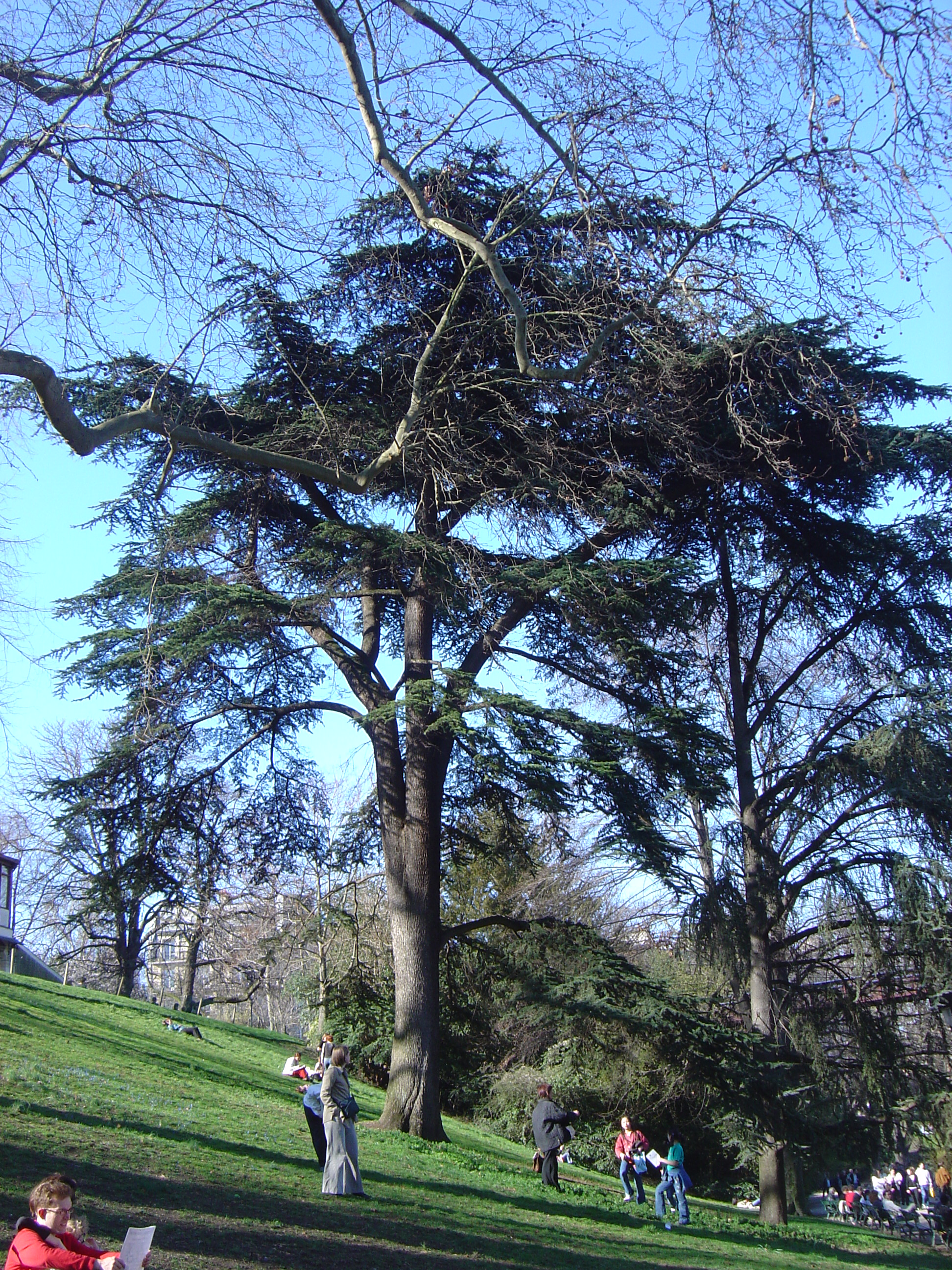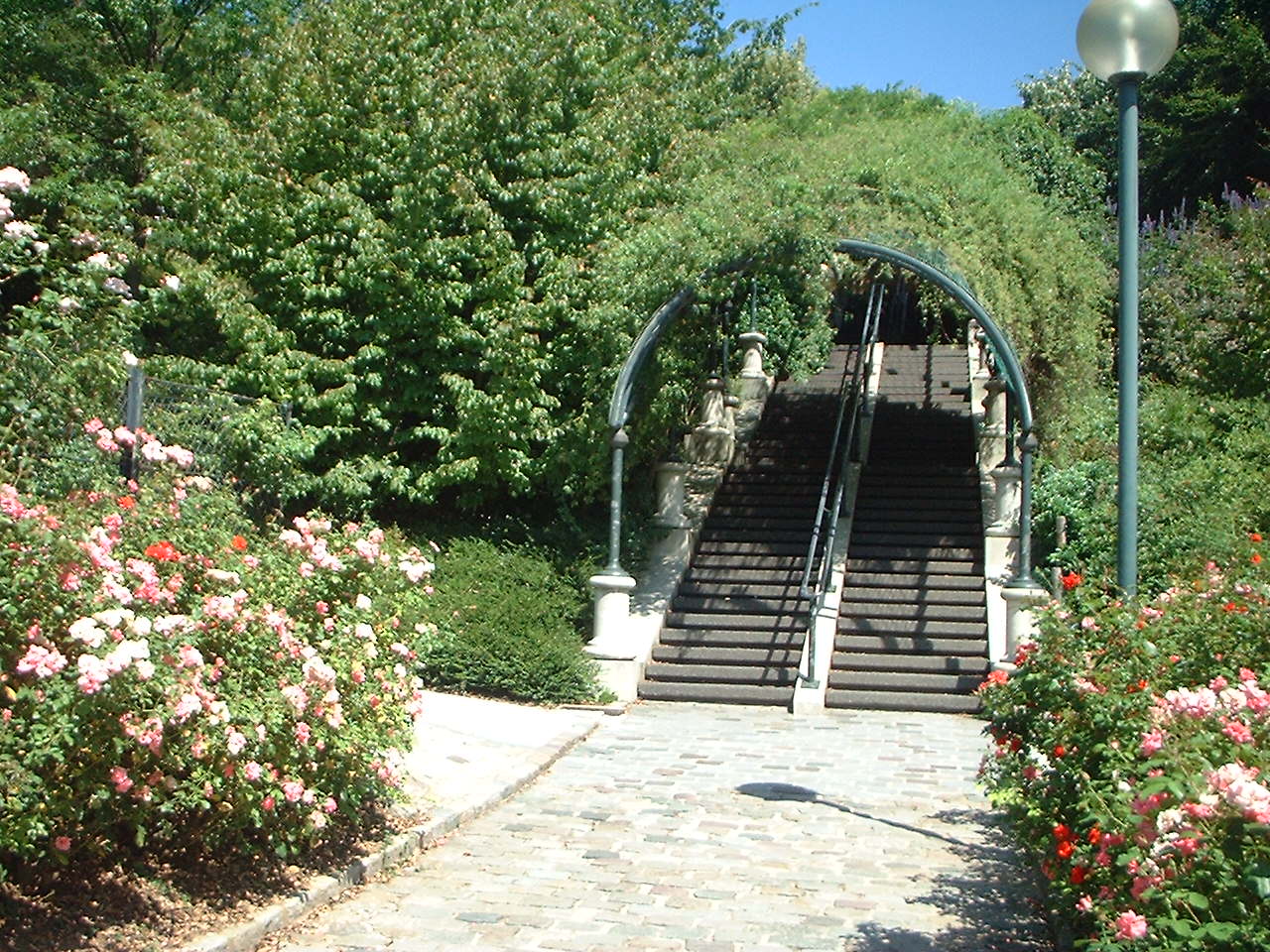|
Geography Of Paris
The geography of Paris is characterised by the urbanisation of the area it lies within, and its position in the Petite Couronne, Grande Couronne, and Île-de-France. Location Paris is located in northern central France. By road, it is southeast of London, south of Calais, southwest of Brussels, north of Marseille, northeast of Nantes, and southeast of Rouen. Paris is located in the north-bending arc of the river Seine and includes two islands, the Île Saint-Louis and the larger Île de la Cité, which form the oldest part of the city. The river's mouth on the English Channel (''La Manche'') is about downstream from the city. The city is spread widely on both banks of the river. Area Excluding the outlying parks of Bois de Boulogne and Bois de Vincennes, Paris covers an oval measuring about in area, enclosed by the ring road, the Boulevard Périphérique. The city's last major annexation of outlying territories in 1860 not only gave it its modern form but also cr ... [...More Info...] [...Related Items...] OR: [Wikipedia] [Google] [Baidu] |
Boulevard Périphérique
The Boulevard Périphérique (), often called the Périph, is a limited-access dual-carriageway ring road in Paris, France. With a few exceptions (see '' Structure and Layout''), it is situated along Paris's administrative limit. The speed limit along the Périphérique is 50 km/h (31 mph) as of 1 October 2024. Each ring generally has four traffic lanes, with no hard shoulder. Its major interchanges are called ''portes''. At junctions, vehicles in the rightmost lane (separated from other lanes in these areas by a continuous white line to the left) must yield to entering vehicles. When travelling at the legal speed limit, it takes approximately 40 minutes to complete a full circuit of the Périphérique. History In 1846, the French War Ministry completed the defensive Thiers wall around Paris, including fortifications, a dry moat, a ''Rue Militaire'' and a large berm. In 1859, the military engineering department gave conditional control of the perimeter to the ... [...More Info...] [...Related Items...] OR: [Wikipedia] [Google] [Baidu] |
Passy
Passy () is an area of Paris, France, located in the 16th arrondissement of Paris, 16th arrondissement, on the Rive Droite, Right Bank. It is adjacent to Auteuil, Paris, Auteuil to the southwest, and Chaillot to the northeast. It is home to many of the city's wealthiest residents, hence its informal grouping in the Neuilly-Auteuil-Passy area. Many embassies are based in Passy. History Early history The earliest mentions of Passy appears in the mention of a lease in villenage in 1250 by members of the Congregation of France. The Château de Passy (no longer existing) had been built in 1381, later renamed to Château de Boulainvilliers in 1747. During the 14th century, King Charles V of France authorized Passy's inhabitants to enclose walls around their fields, and a century later in 1416, Passy became a Lordship. In 1658, hot mineral springs were discovered near what is now Rue des Eaux where spa facilities were developed. This attracted Parisian society and English visitors, ... [...More Info...] [...Related Items...] OR: [Wikipedia] [Google] [Baidu] |
Buttes-Chaumont
The Parc des Buttes Chaumont (; English: Park of Buttes Chaumont) is a public park situated in northeastern Paris, France, in the 19th arrondissement. Occupying , it is the fifth-largest park in Paris, after the Bois de Vincennes, Bois de Boulogne, Parc de la Villette and Tuileries Garden. Opened in 1867, late in the regime of Napoleon III, it was built according to plans by Jean-Charles Adolphe Alphand, who created all the major parks for Haussmann's renovation of Paris commanded by the Emperor. The park has of roads and of paths. Its best known feature is the ''Temple de la Sibylle'' (Sibyl's Temple), a miniature Roman temple inspired by the Temple of Vesta in Tivoli, Italy, and located on the Belvedere island in the artificial lake, at the top of a cliff. History The park took its name from the bleak hill which formerly occupied the site; because of the chemical composition of its soil, the hill was almost bare of vegetation and was called ''Chauve-mont'', 'bare hill ... [...More Info...] [...Related Items...] OR: [Wikipedia] [Google] [Baidu] |
Belleville, Paris
Belleville () is a neighbourhood of Paris, France, parts of which lie in four different arrondissements of Paris, arrondissements. The major portion of Belleville straddles the borderline between the 20th arrondissement of Paris, 20th arrondissement and the 19th arrondissement of Paris, 19th along its main street, the ''Rue de Belleville''. The remainder lies in the 10th arrondissement of Paris, 10th and 11th arrondissement of Paris, 11th arrondissements. It was once the independent commune in France, commune (municipality) of Belleville (commune), Belleville which was annexed by the City of Paris in 1860 and divided between two arrondissements. Geographically, the neighborhood is situated on and around a hill which ties with Montmartre as the highest in Paris. The name Belleville literally means "beautiful town". History Historically, Belleville was a working-class neighborhood. People living in the independent village of Belleville played a large part in establishing the S ... [...More Info...] [...Related Items...] OR: [Wikipedia] [Google] [Baidu] |
Montmartre
Montmartre ( , , ) is a large hill in Paris's northern 18th arrondissement of Paris, 18th arrondissement. It is high and gives its name to the surrounding district, part of the Rive Droite, Right Bank. Montmartre is primarily known for its artistic history, for the white-domed Sacré-Cœur, Paris, Basilica of the Sacré-Cœur on its summit, and as a nightclub district. The other church on the hill, Saint Pierre de Montmartre, built in 1147, was the church of the prestigious Montmartre Abbey. On 15 August 1534, Saint Ignatius of Loyola, Saint Francis Xavier and five other companions bound themselves by vows in the Martyrium of Saint Denis, 11 Rue Yvonne Le Tac, the first step in the creation of the Society of Jesus, Jesuits. Near the end of the 19th century and at the beginning of the 20th, during the Belle Époque, many artists lived, worked, or had studios in or around Montmartre, including Amedeo Modigliani, Claude Monet, Pierre-Auguste Renoir, Edgar Degas, Henri de Toulou ... [...More Info...] [...Related Items...] OR: [Wikipedia] [Google] [Baidu] |
France
France, officially the French Republic, is a country located primarily in Western Europe. Overseas France, Its overseas regions and territories include French Guiana in South America, Saint Pierre and Miquelon in the Atlantic Ocean#North Atlantic, North Atlantic, the French West Indies, and List of islands of France, many islands in Oceania and the Indian Ocean, giving it Exclusive economic zone of France, one of the largest discontiguous exclusive economic zones in the world. Metropolitan France shares borders with Belgium and Luxembourg to the north; Germany to the northeast; Switzerland to the east; Italy and Monaco to the southeast; Andorra and Spain to the south; and a maritime border with the United Kingdom to the northwest. Its metropolitan area extends from the Rhine to the Atlantic Ocean and from the Mediterranean Sea to the English Channel and the North Sea. Its Regions of France, eighteen integral regions—five of which are overseas—span a combined area of and hav ... [...More Info...] [...Related Items...] OR: [Wikipedia] [Google] [Baidu] |
Topography
Topography is the study of the forms and features of land surfaces. The topography of an area may refer to the landforms and features themselves, or a description or depiction in maps. Topography is a field of geoscience and planetary science and is concerned with local detail in general, including not only relief, but also natural, artificial, and cultural features such as roads, land boundaries, and buildings. In the United States, topography often means specifically relief, even though the USGS topographic maps record not just elevation contours, but also roads, populated places, structures, land boundaries, and so on. Topography in a narrow sense involves the recording of relief or terrain, the three-dimensional quality of the surface, and the identification of specific landforms; this is also known as geomorphometry. In modern usage, this involves generation of elevation data in digital form ( DEM). It is often considered to include the graphic representation of t ... [...More Info...] [...Related Items...] OR: [Wikipedia] [Google] [Baidu] |
Paris Department Relief Location Map
Paris () is the Capital city, capital and List of communes in France with over 20,000 inhabitants, largest city of France. With an estimated population of 2,048,472 residents in January 2025 in an area of more than , Paris is the List of cities in the European Union by population within city limits, fourth-most populous city in the European Union and the List of cities proper by population density, 30th most densely populated city in the world in 2022. Since the 17th century, Paris has been one of the world's major centres of finance, diplomacy, commerce, culture, Fashion capital, fashion, and gastronomy. Because of its leading role in the French art, arts and Science and technology in France, sciences and its early adoption of extensive street lighting, Paris became known as the City of Light in the 19th century. The City of Paris is the centre of the Île-de-France region, or Paris Region, with an official estimated population of 12,271,794 inhabitants in January 2023, or ... [...More Info...] [...Related Items...] OR: [Wikipedia] [Google] [Baidu] |
2003 European Heat Wave
The 2003 European heat wave saw the hottest summer recorded in Europe since at least 1540. France was hit especially hard. The heat wave led to health crises in several countries and combined with drought to create a crop shortfall in parts of Southern Europe. The death toll has been estimated at more than 70,000. The predominant heat was recorded in July and August, partly a result of the western European seasonal lag from the maritime influence of the Atlantic warm waters in combination with hot continental air and strong southerly winds. By country France In France, 14,802 heat-related deaths (mostly among the elderly) occurred during the heat wave, according to the French National Institute of Health. France does not commonly have very hot summers, particularly in the northern areas, but eight consecutive days with temperatures of more than were recorded in Auxerre, Yonne in early August 2003. Because of the usually relatively mild summers, most people did not know ... [...More Info...] [...Related Items...] OR: [Wikipedia] [Google] [Baidu] |
North Atlantic Current
The North Atlantic Current (NAC), also known as North Atlantic Drift and North Atlantic Sea Movement, is a powerful warm western boundary current within the Atlantic Ocean that extends the Gulf Stream northeastward. Characteristics The NAC originates from where the Gulf Stream turns north at the Southeast Newfoundland Rise, a submarine ridge that stretches southeast from the Grand Banks of Newfoundland. The NAC flows northward east of the Grand Banks, from 40°N to 51°N, before turning sharply east to cross the Atlantic. It transports more warm tropical water to northern latitudes than any other boundary current; more than 40 Sv () in the south and 20 Sv () as it crosses the Mid-Atlantic Ridge. It reaches speeds of near the North American coast. Directed by topography, the NAC meanders heavily, but in contrast to the meanders of the Gulf Stream, the NAC meanders remain stable without breaking off into eddies. The colder parts of the Gulf Stream turn northward n ... [...More Info...] [...Related Items...] OR: [Wikipedia] [Google] [Baidu] |








